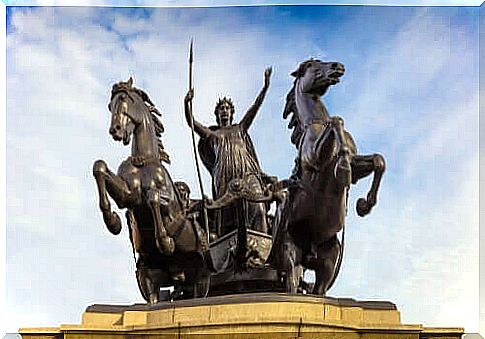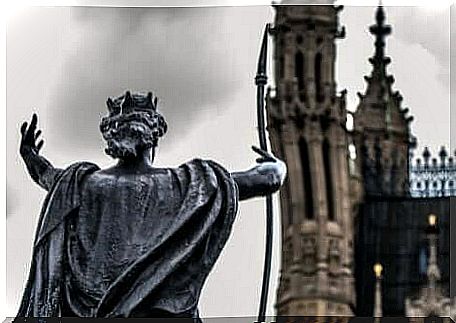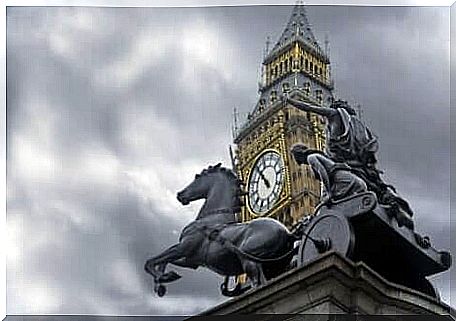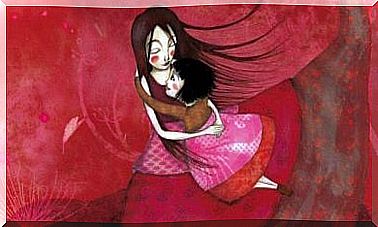Boudica, The Rebellious Queen Of The Celts

Her name means victorious, and she led the greatest force that the Romans dared to face in the British Isles. Read on and learn about the history of Boudica, a brave warrior and a real personality.
In the year 61 AD, in the British Isles was Watling Street, a huge highway built by the Romans. The purpose of this highway was to connect Wales with the rest of the island.
Boudica was a tall woman for the time, with long brown hair and a strong build. She quickly ingested a deadly poison, perhaps aided by her daughters. According to Tacito, this was the end of one of the ancient tragedies.
This woman was not just another legendary warrior queen of the Iceni. They wrote her name Boudica in her native language and she was famous for uniting the rebellious tribes of the British Isles against the Roman invasion, as was the Welsh leader, Vercingetorix.
As a result, she acquired the right to be on the list of Rome’s great rivals. With that, she joined the list that also includes Virato, Hannibal, Armino, and Spartacus.
Rome, an expanding empire
After Julius Cesar’s famous conquest of Wales, the Roman Empire sought new territories and conquests where they could bring their legions and fulfill the ambitions of their generals.
Since the legendary general was planning the invasion of the British Isles, he was probably also interested in taking the land of the Celtic Druids. However, the beginning of the inevitable conquest had already begun with the arrival of Emperor Caligula.
Shakespeare’s Cymbeline was set during these early battles. Later Emperor Claudius also continued the campaigns. During this time, certain tribes united to defend themselves against the Romans, while other generals, such as Caradawc, opted for revolts that resulted in more or less victories.
During this time, the conquerors founded Lodinium, present-day London, on the banks of the River Thames. The war continued in the woods with little result. Unfortunately, their luck was running out.

Boudica, the widow queen
One of the kings who joined the Romans was Prasugatus, of the Iceni. In exchange for the protection and support of Emperor Nero, this monarch promised to give up his title and lands when his children died.
We don’t know what happened to him after that, but it was what sparked the conflict. Because Roman law did not recognize inheritances for women, his daughters could not legally inherit from the king.
Probably the emperor could soon be dishonest, but he did not want to change the story of Prasugatos’ wife. This is the moment when you get to know Boudica, like a widow who claimed her rights according to the tradition of her people.
However, they responded to the Queen’s resistance with beatings, such as that of her daughters and the death of her lieutenants. Meanwhile, the Roman allies were conquering land and attacking traditional places.
That’s when the uprising really started. Since surrender was not an option for Boudica, she did not flee. Boudica won the right to put her name on the list of Rome’s great rivals, along with Viriato, Hannibal, Arminio, Spartacus, and Vercingetorix.
Boudica’s Rebellion
Her name, or perhaps her nickname, meant conqueror in those days. She rode in her carriage to her people, encouraged by the humiliations she had endured.
In addition, she managed to get a number of tribes and other warriors to unite with her. She also led the forces that would confront the Romans in the British Isles.
Even more impressive was the image of her flowing hair and the war paintings on her carriage. This is actually the image you see on the statue in London dedicated to her memory. To her enemies, of course, it was a terrifying scene.
With her troops she invaded London and sacked this and other cities in the south of the country, which was at that time occupied by the Romans. Even the Romans claimed that she showed no mercy, any more than the Roman soldiers. She brutally destroyed the mighty Spanish Legion in one fell swoop.
Her victories increased her followers. However, after about a year of struggle, the Roman general Suetonius came to power.

The last tragedy
In a narrow stony valley a very unequal battle took place, of five Roman soldiers against one of the British. Even more unfair was that the Romans were very disciplined and fought the great final battle.
As a result, the Celts were unable to break through the Roman formation, and had to flee and retreat quickly. Thus ended their hopes. Unfortunately, for every hundred British casualties, there was only one casualty for the Romans and their allies.
Before the inevitable end, Boudica chose death over captivity, aware of what would happen if she were captured alive. Suetonius did not want to honor the defeated queen, but Britain has never had a general like her again. In the end, she endured betrayal, humiliation and revenge.
Despite the fact that great Celtic armies have never been formed, there have certainly been many female warriors. These women also fought for life, freedom and land.









